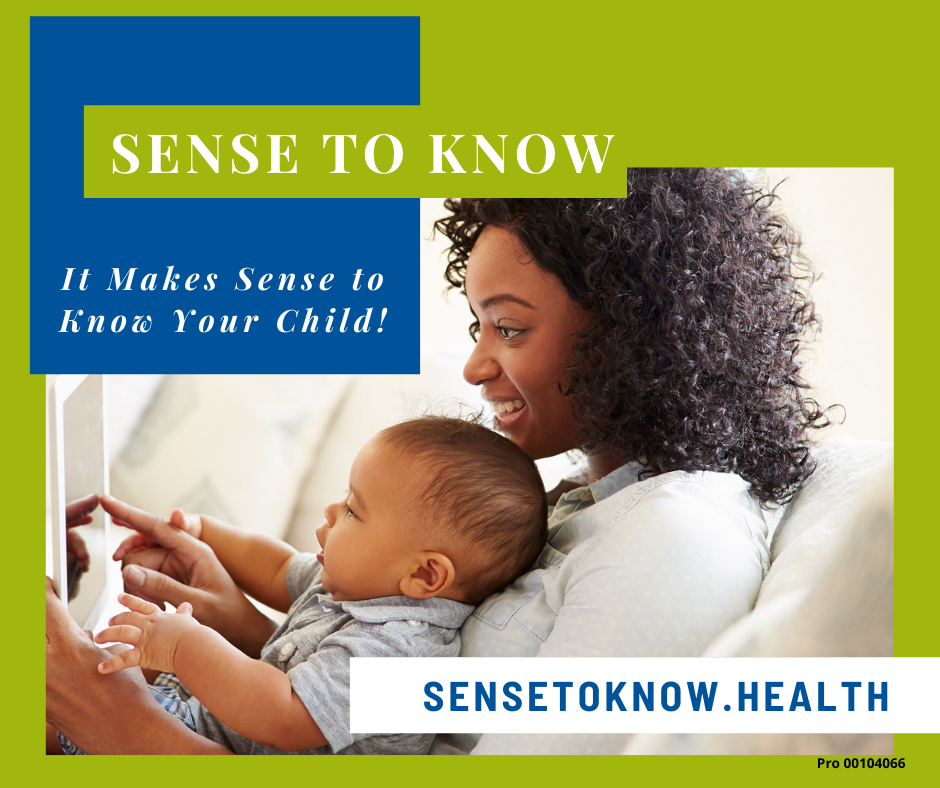Study Details / Detalles del Estudio
The Duke Sense to Know (S2K) Study is working to develop new, faster ways to assess child development using technology that parents can use in their own homes. The S2K Study uses a six-minute child development screening app created by Duke University child development experts.
Using the app, babies watch short movies and play a fun bubble-popping game at the end. By recording how children respond to these movies, researchers are able to learn about child development.
El estudio Duke Sense to Know (S2K) de Duke está trabajando para desarrollar formas nuevas y más rápidas de evaluar el desarrollo infantil utilizando tecnología que los padres pueden usar en sus propios hogares. El estudio S2K utiliza una aplicación de evaluación del desarrollo infantil de seis minutos creada por expertos en desarrollo infantil de la Universidad Duke.
Con la aplicación, los bebés ven películas cortas y al final juegan un divertido juego de hacer explotar burbujas. Al registrar cómo responden los niños a estas películas, los investigadores pueden aprender sobre el desarrollo infantil.
Pro#: 00104066
Criteria: Children 6 months – 36 months who are Duke Health patients
Criterios: Niños de 6 meses a 36 meses que sean pacientes de Duke Health
Enrollment status: Currently Enrolling
Estado de inscripción: Actualmente inscribiéndose
Date: June 30, 2022
Fecha: 30 de junio de 2022
Additional Study Team Members / Miembros Adicionales del Equipo de Estudio
S2K App / La Aplicación S2K
Duke University child development experts created the six-minute Sense to Know (S2K) app so parents and caregivers can partner with us at home to learn about how your baby or child grows. Your participation will help us to better understand early development of children and improve their health and outcomes.
Learn more and watch a video about the S2K app here
Already using the S2K app?
Los expertos en desarrollo infantil de la Universidad de Duke crearon la aplicación Sense to Know (S2K) de seis minutos para que los padres y cuidadores puedan asociarse con nosotros en casa para aprender cómo crece su bebé o niño. Su participación nos ayudará a comprender mejor el desarrollo temprano de los niños y mejorar su salud y sus resultados.
Obtenga más información y vea un video sobre la aplicación S2K aquí
Ya usando la aplicación S2K?
Consulta las preguntas frecuentes sobre la aplicación S2K aqui.

FAQs / Prequntas Frecuentes
Questions about the S2K study?
See the S2K study FAQs here.
¿Prequntas sobre del estudio S2K?
Consulta las preguntas frecuentes sobre el estudio S2K aqui.
Questions about the S2K app?
See the S2K app FAQs here.
¿Preguntas sobre la aplicación S2K?
Consulta las preguntas frecuentes sobre la aplicación S2K aqui.
Want to reach the S2K Study team?
Click here to send the team your question.
¿Quiere comunicarse con el equipo de estudio?
Haga clic aquí para enviar su pregunta al equipo.
Selected Publications
Chang Z, Di Martino JM, Aiello R, et al. Computational Methods to Measure Patterns of Gaze in Toddlers With Autism Spectrum Disorder. JAMA Pediatr. 2021;175(8):827–836. doi:10.1001/jamapediatrics.2021.0530Computational Methods to Measure Patterns of Gaze in Toddlers with Autism Spectrum Disorder
Perochon, Sam, Matias Di Martino, Rachel Aiello, Jeffrey Baker, Kimberly Carpenter, Zhuoqing Chang, Scott Compton, et al. “A scalable computational approach to assessing response to name in toddlers with autism.” J Child Psychol Psychiatry 62, no. 9 (September 2021): 1120–31. https://doi.org/10.1111/jcpp.13381.
Kaliukhovich, Dzmitry A., Nikolay V. Manyakov, Abigail Bangerter, Seth Ness, Andrew Skalkin, Matthew Boice, Matthew S. Goodwin, et al. “Visual Preference for Biological Motion in Children and Adults with Autism Spectrum Disorder: An Eye-Tracking Study.” J Autism Dev Disord 51, no. 7 (July 2021): 2369–80. https://doi.org/10.1007/s10803-020-04707-w.
Bovery, M., G. Dawson, J. Hashemi, and G. Sapiro. “A Scalable Off-the-Shelf Framework for Measuring Patterns of Attention in Young Children and Its Application in Autism Spectrum Disorder.” Ieee Transactions on Affective Computing 12, no. 3 (July 1, 2021): 722–31. https://doi.org/10.1109/TAFFC.2018.2890610.
Carpenter, Kimberly L. H., Jordan Hahemi, Kathleen Campbell, Steven J. Lippmann, Jeffrey P. Baker, Helen L. Egger, Steven Espinosa, Saritha Vermeer, Guillermo Sapiro, and Geraldine Dawson. “Digital Behavioral Phenotyping Detects Atypical Pattern of Facial Expression in Toddlers with Autism.” Autism Res 14, no. 3 (March 2021): 488–99. https://doi.org/10.1002/aur.2391.
Tenenbaum, Elena J., Kimberly L. H. Carpenter, Maura Sabatos-DeVito, Jordan Hashemi, Saritha Vermeer, Guillermo Sapiro, and Geraldine Dawson. “A Six-Minute Measure of Vocalizations in Toddlers with Autism Spectrum Disorder.” Autism Res 13, no. 8 (August 2020): 1373–82. https://doi.org/10.1002/aur.2293.